Biomechanics of the Anterior Plantar Arch/Hallux
Dr. Mauro Lastrico
Extract from:
"Musculoskeletal Biomechanics and Mézières Methodology"
Author: Dr. Mauro Lastrico
Marrapese Publisher
Anterior Plantar Arch
The vector dominances on the anterior arch express themselves differently compared to the medial arch.
The bases of the arch (1st and 5th metatarsals), besides the ligaments, are supported only by the oblique head of the adductor hallucis muscle,
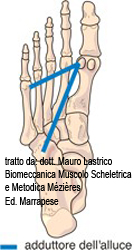
while all the other muscles act on the toes:
* long and short extensor muscles of the toes: dorsiflex the toes;
* long and short extensor muscles of the hallux: dorsiflex the big toe;
* lumbricals and interossei: dorsiflex the first phalanx and plantarflex the second;
* long flexor of the toes: plantarflex the last phalanx;
* short flexor of the toes: plantarflex the second phalanx.
The retraction of these muscles causes a vector dominance in dorsiflexion of the first phalanx and plantarflexion of the second and third.
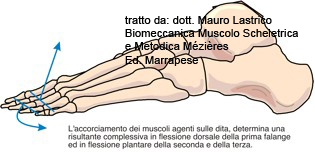
Dorsiflexion of the first phalanx of the toes produces a mechanical thrust on the metatarsals, projecting them towards the ground. Under load, the portion of the total force G that is discharged on the anterior arch contributes to this thrust.
In this case, the force supporting the bases of the arch, the transverse portion of the adductor hallucis, is underdominant. The first and fifth metatarsals move away and the anterior arch flattens.
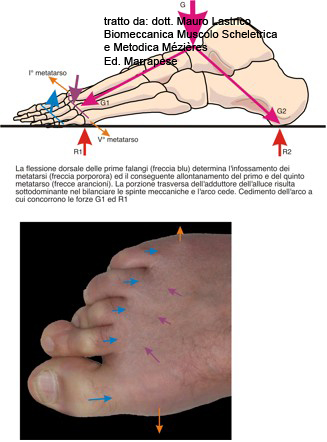
Hallux
The lateral stability of the hallux is under the control of the adductor and abductor muscles of the hallux, long and short extensor muscles of the hallux, and long and short flexor muscles of the hallux.
Considering the foot axis, extended from the center of the heel to the second toe, the long extensor and long flexor muscles of the hallux adduct the distal phalanx of the hallux, the short extensor and abductor muscles abduct the first metatarsal and the first phalanx of the hallux, the adductor and short flexor muscles adduct the first metatarsal and the first phalanx of the hallux.
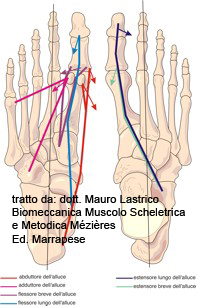
The systemic shortening of these muscles determines a resultant and a vector dominance that expresses itself with the abduction of the first metatarsal and the adduction of the distal phalanx of the hallux (hallux valgus).
The collapse of the anterior plantar arch, determining the abduction, relative to the second toe, of the first and fifth metatarsals, accentuates the angular deviation of the hallux. The two conditions often appear in association.
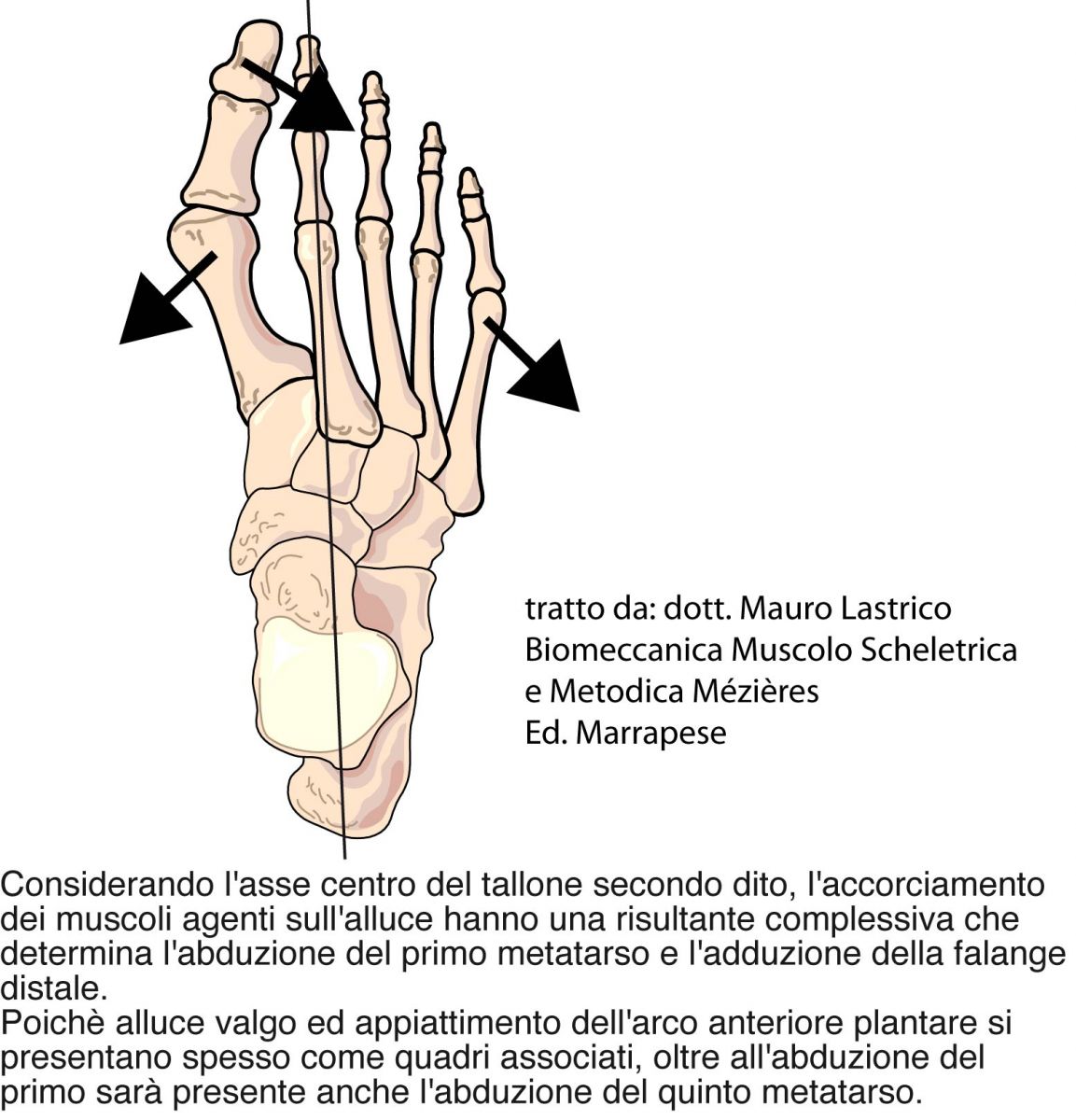
During evaluation, it will also be important to determine whether the associated condition, hallux valgus/collapse of the anterior arch, is primarily caused by the selective shortening of the acting muscles or is a consequence of the anteriorization of the total force G applied to the body center of mass.
This force, unlike what happens for the medial arch, is counteracted only by the adductor hallucis in its transverse portion. The potential force expressible by the adductor hallucis is insufficient to counteract the force of the entire body weight, and consequently, the metatarsals from the second to the fourth will come into contact with the ground.
Once the arch is flattened, the total force G distributes to all metatarsal heads where it is balanced by force R, itself distributed on all metatarsal heads.
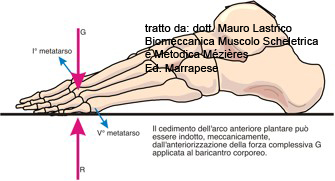
Copyright © 2025 AIFiMM Formazione Mézières Provider E.C.M. n. 1701. All rights reserved.



